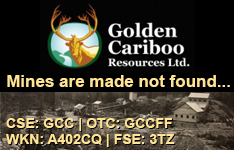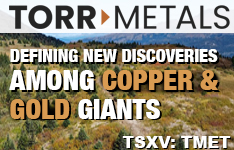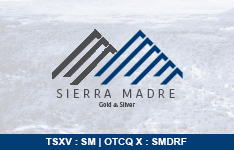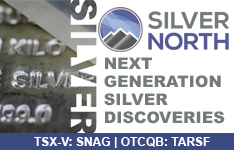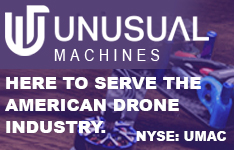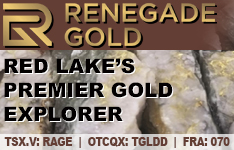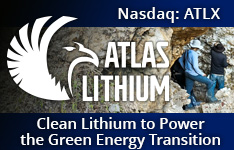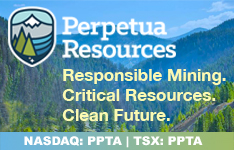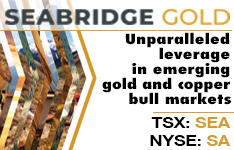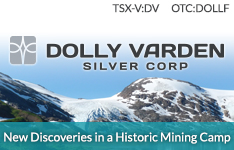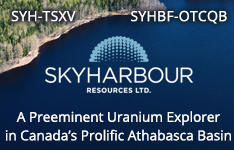The Life Sciences Report: You have just returned from the 63rd annual meeting of the American Association for the Study of Liver Diseases (AASLD) in Boston ("The Liver Meeting"). I know it took place over five days, but could you briefly talk about the focus?
John Tucker: The AASLD meeting covers a broad range of issues around diseases of the liver—everything from alcoholic liver disease to priority rules for liver transplants to viral hepatitis. It is wide-ranging, but recent developments in the treatment of hepatitis C (HCV) were a major focus, simply because there has been so much progress in the area.
TLSR: We've seen a lot of interest around drug development for HCV. It was pretty trendy last year for investors. What does the HCV sector look like today?
JT: Currently HCV is treated with a 6–12-month regimen of interferon, ribavirin and a protease inhibitor (either Vertex Pharmaceuticals Inc.'s (VRTX:NASDAQ) Incivek [telaprevir] or Merck & Co. Inc.'s (MRK:NYSE) Victrelis [boceprevir]). The presence of interferon in these regimens is a problem because it must be injected and because it has severe side effects. At the European Association for the Study of the Liver (EASL) meeting in April, we saw the first detailed presentations of highly efficacious interferon-free treatment regimens. This was a watershed moment.
Since then there have been refinements in the treatments, and at AASLD we saw a lot more detail on what is possible—especially with regard to the competitive profiles of regimens in development by different companies. In the near term the competition is likely to be mainly between Gilead Sciences Inc. (GILD:NASDAQ) and Abbott Laboratories (ABT:NYSE). Gilead has some two- and three-drug treatment regimens in development, some of which potentially involve only a single daily pill. Abbott's regimens are more complex, but might be applicable to a wider range of patients and/or allow for fewer total weeks of treatment. Bristol-Myers Squibb Co. (BMY:NYSE) has a slightly earlier-phase regimen of three drugs that looks interesting.
TLSR: There was an article in the Nov. 14, 2012 issue of the Wall Street Journal regarding Gilead Sciences' $11 billion ($11B) acquisition of Pharmasset Inc., which had been collaborating with Bristol-Myers Squibb in development of a combination therapy for HCV. That deal may have stalled development of a promising therapy. Comment?
JT: At EASL, Gilead and Bristol-Myers disclosed very high cure rates with an interferon-free regimen incorporating Gilead's nucleoside analog GS-7977 and Bristol's NS5A inhibitor, daclatasvir. Gilead chose not to develop this combination, but instead to develop a similar combination of GS-7977 and its own NS5A inhibitor, GS-5885. This pushed back the availability of the first interferon-free treatment regimen for patients with the most common form of the virus by six months to a year, which angered some HCV patients and patient advocacy groups. Gilead's decision was likely related to the large sum it spent on the acquisition of GS-7977 from Pharmasset. Sharing revenues with Bristol would make it more difficult for the company to recover its investment.
TLSR: You were trained as an organic chemist, and you worked in industry as a medicinal chemist. Excluding interferons for a moment, would you address the different classes of drugs used in HCV?
JT: Let me mention first that HCV is, in many ways, like HIV. With HIV, scientists learned very early on that if a patient was treated with one drug or one class of drugs, resistance developed very rapidly. To suppress HIV the standard cocktail involves at least three drugs—three actually being very common. Investigators have found something very similar in HCV. One important difference is that HCV can be cured, so patients don't have to be on lifelong therapy as they do in HIV.
There are four categories of HCV drugs that operate by different mechanisms.
Nucleoside analog HCV polymerase inhibitors prevent the synthesis of viral RNA. Importantly, the virus seems to be completely unable to develop resistance to this class of drug. Some members of this class, such as GS-7977, are also among the more potent HCV drugs developed to date. In spite of these attractive properties, nucleoside inhibitors are not potent enough to effect a cure as monotherapy. They must be combined with at least one additional drug.
"We have seen the first detailed presentations of highly efficacious interferon-free treatment regimens—a watershed moment."
In HCV, as in HIV, protease inhibitors are also used. These prevent processing of certain viral proteins. If you block processing, you don't get functional viral proteins. These are typically quite potent, but the barrier to resistance development is not quite as high as for nucleoside analogs. In many, if not most, trials of protease inhibitor-based combinations, you see at least a few patients failing therapy due to resistance development.
A typical interferon-free treatment regimen consists of a nucleoside analog or protease inhibitor combined with an inhibitor from one of the classes I'll discuss next. An older HCV drug, ribavirin, is sometimes thrown into the mix as well.
Non-nucleoside polymerase inhibitors, as the name implies, inhibit the HCV polymerase. They bind to a different site on the enzyme than nucleoside analogs and prevent viral reproduction. They tend to be less potent than protease inhibitors and usually have a fairly low barrier to resistance development.
Then there's a class called NS5A inhibitors. An NS5A is an enzyme that has no counterpart in HIV. It is unique to HCV. Typically these inhibitors are fairly potent. First-generation NS5A inhibitors, like Bristol's daclatasvir and Gilead's GS-5885, have a relatively low barrier to resistance development in HCV genotype 1a, which is the most common viral strain in the U.S. Second-generation NS5A inhibitors seem to be a lot like protease inhibitors: They are potent and have a higher barrier to resistance development.
TLSR: Given the progress and the large number of products in development, what are the unmet needs in HCV today?
JT: The buzz we heard at AASLD was mainly concern that the patients being enrolled in most ongoing clinical trials are not representative of the patients that doctors see in their practices. Companies were presenting 12-week treatment regimens with 90–100% cure rates. We are happy to see that kind of success, but most of the clinical trials exclude hard-to-treat patients. We don't see a lot of trials with interferon-free treatment regimens that include patients with cirrhosis of the liver, which is historically much harder to cure. I've seen estimates that as many as 25% of HCV patients seeking treatment are cirrhotic.
We also don't see trials that include patients who are HIV-coinfected. This is a pretty big group. An estimated 1.2 million (1.2M) people in the U.S. are infected with HIV, and about 30% of them are coinfected with HCV, so about 400,000 (400K) HCV patients in the country are coinfected with HIV.
In addition, cure rates with the old interferon/ribavirin treatment regimen were only about 40%, so another 200K or so people in the U.S. are prior treatment failures. We don't see a lot of trials with new treatment regimens that include these patients. One important exception is the Abbott regimen, which included 93% of patients who were previously treated with interferon and ribavirin but failed to achieve a cure.
It could be that 30–40% of patients seeking treatment belong to one of these hard-to-treat groups, and have not been widely included in clinical trials of interferon-free treatment regimens.
TLSR: John, it sounds like you're saying that drug developers don't want to dirty up the drug labels with clinical trial data on patients who have comorbidities. They would just like to get the drugs through the pipeline and into the market prior to testing in patients with complicating factors.
JT: My guess is the U.S. Food and Drug Administration (FDA) will require drug developers to look at some of these groups. I'm a former pharmaceutical guy, so I tend to look at it more sympathetically. Frankly, I think developers were surprised at how well these drugs have been working, so they initially picked treatment populations they thought they had a good chance with. Also, it would have been unethical to run trials in hard-to-treat patients before demonstrating success in easier-to-treat patients, because if patients fail treatment they could end up infected with multidrug-resistant virus.
TLSR: That's the opposite model of what we do in cancer drug development.
JT: Yes. Cancer usually can't be cured once it has become metastatic. The goal is to extend life as long as possible, and drugs are tested first in patients who have become resistant to older drugs. But HCV is curable, and it is more of a priority to avoid resistance development.
TLSR: Can these unmet needs translate into big gains for investors, or is this a population of patients largely uncovered by insurance and unable to pay for therapies?
JT: It is like the obesity market. Just because you have the disease doesn't necessarily mean you're ever going to be treated. There are substantial numbers of people out there who are uninsured. And since it takes so long for cirrhosis or liver cancer to develop, many will die of other causes before their HCV becomes an issue.
In the U.S., the National Health and Nutrition Examination Survey found 3–3.1M people with HCV. About two years later a broader survey included the homeless and people in prison, where the infection rate is very high. Now we think about 5M Americans are infected. Of that number, it's questionable whether 2M will be treated. And half of people who have HCV don't even know they are infected.
"How these companies expect to displace an entrenched competitor with an inferior product is beyond me."
It makes a big difference whether a quarter, a third, a half or two-thirds of the HCV-positive population undergoes treatment. Some people will die of unrelated causes without ever knowing they have the disease. Others will learn they are infected as a result of developing end-stage liver disease or cancer; for some of these patients it will be too late to treat the virus. I don't think we'll know the answer to your question until we have the drugs out there.
Another big issue is that most of these infections are historical, going back to IV drug use in the 1970s and transfusions that occurred before testing of the blood supply began in 1992. Unlike other infectious diseases, the pool of patients will shrink as people get cured. There are few new infections occurring.
TLSR: Are there too many companies in this space?
JT: My gut feeling is that HCV will produce a negative net present value (NPV) for the pharmaceutical industry as a whole because there are too many companies chasing the market.
TLSR: So, the HCV market is crowded?
JT: Yes. There are more than 40 drugs in phase 2 and phase 3 development at this point. It appears that a limited set of drugs have outsized potential, and that a lot of drugs continuing in development have potential that is less obvious. In many cases the drug regimens that remain in development are clearly inferior to others that will reach the market sooner. How these companies expect to displace an entrenched competitor with an inferior product is beyond me. One cannot help but wonder why some of these programs have not been killed.
TLSR: Let's track back to Gilead for a moment. It did pay up for Pharmasset. How is that working?
JT: It seems very clear that Gilead is going to have an important role in this market. Its GS-7977 (sofosbuvir), which was acquired in the Pharmasset deal, is very potent. It's a nucleotide polymerase inhibitor, and has a very high barrier to resistance. Only one or two patients out of more than 1,000 treated with GS-7977 have shown any sign of a resistant virus, and the resistance mutations that have been observed lead to profoundly reduced replication competence. Gilead has combined GS-7977 with an internal compound, GS-5885, an NS5A inhibitor, and shown that patients can be treated successfully for HCV genotype 1 without interferon. In what is essentially a small phase 2 trial, the GS-7977/GS-5885 combination has gotten wonderful results in easy-to-treat patients—as much as a 100% cure rate after only 12 weeks.
GS-7977 and GS-5885 have each been studied in combination with other drugs in multiple clinical trials, so their safety is well characterized and surprises are unlikely at this point. Gilead recently initiated the first phase 3 trial of this combination, and at this point the likelihood of a successful phase 3 program and eventual approval seems very high. The GS-7977/GS-5885 therapy has reasonable potential to work in the more difficult-to-treat patient populations, but we don't have data yet for the studies in these patients. There's some possibility that ribavirin or some third drug may be added in these cases. Alternatively, the combination might succeed by increasing the duration of treatment.
Gilead is also looking at a combination of GS-7977 + ribavirin in less-common genotypes 2 and 3. Multiple phase 3 trials of this combination have completed recruiting and we expect it to be approved for genotype 2 and 3 patients in early 2014.
TLSR: What could go wrong for Gilead's HCV program?
JT: There seems to be a widespread assumption that it will dominate the HCV market. That may or may not be true. If another company does well, there's downside for Gilead. I don't know how much upside there is because all of the assumptions are positive right now.
TLSR: Gilead has been the best performer in the group of companies that we are talking about today. It's up 76% over the past 52 weeks, and it's even up 7% from one month ago, when almost all stocks in all industries have suffered. Everything has to go perfectly for Gilead, is that what you're saying?
JT: Yes. Assuming everything goes as well as could reasonably be expected for Gilead, the company's therapy will cure more than 90% of genotype 1 patients in 12 weeks or less with a single daily pill. That would be awesome.
"HCV is curable, and it is more of a priority to avoid resistance development."
Other companies like Abbott and Bristol are developing more complicated regimens involving three or four drugs. These involve taking pills twice a day instead of once a day, which is less convenient and can be confusing for patients. The combinations may be more potent than Gilead's, however, and might be developed for treatment regimens shorter than 12 weeks. If Abbott or Bristol can cure patients in a shorter time than Gilead, they could take a significant piece of the market.
It is also possible that Gilead's two-drug combination will not work well in difficult-to-treat patients, and a third drug such as ribavirin will be needed to make this combination work in many patients. Since ribavirin must be taken twice a day, this would eliminate some of Gilead's simplicity advantage.
TLSR: Gilead's market cap is now $54.3B.
JT: It's big. My bear thesis is that one or two years after GS-7977 hits the market with this wonderful combination, another company will come out with a single daily pill that cures 90–100% of patients in only eight weeks, or even six. That might happen, for example, with a combination of a nucleotide analog and a protease inhibitor or second-generation NS5A inhibitor, essentially combining two "strong" anti-HCV drugs. The combinations in late-stage development today can loosely be characterized as combining a strong anti-HCV drug with one or more others that are less potent or have a relatively low barrier to resistance development.
As it is widely expected to dominate the HCV market, Gilead is also the most vulnerable to uncertainty when it comes to determining how big the HCV market really is. I am concerned that investors may be overestimating the size of the market.
TLSR: Another company?
JT: Vertex Pharmaceuticals, with a $9B market valuation, is interesting, though declining revenues from Incivek are a concern. Incivek, a protease inhibitor, is a first-generation HCV drug used in combination with interferon and ribavirin. This combination has all the side effects associated with interferon, and telaprevir has some serious side effects as well. In clinical trials around 10% of patients dropped out due to problems such as severe rash, anemia, fatigue, nausea, diarrhea and vomiting; some reports suggest that the dropout rate is much higher in clinical practice.
We've already seen Incivek sales drop in anticipation of better drugs reaching the market in the 2014–2015 timeframe. Vertex also has an approved drug for a subset of cystic fibrosis patients. It also has preliminary data suggesting some efficacy in a second, larger, set of cystic fibrosis patients, but the efficacy in these patients is not fully established.
Vertex has recently signed an agreement with Alios BioPharma (private) for the potent pan-genotypic nucleotide analog HCV polymerase inhibitor ALS-2200 (now VX-135). ALS-2200 recently entered phase 2 development, and so far its properties look very similar to Gilead's 7977 drug. Vertex has initiated a phase 2 trial of ALS-2200 in combination with ribavirin, and other planned phase 2 trials will examine combinations of ALS-2200 with Glaxo's non-nucleoside polymerase inhibitor GSK2336805, Incivek or Johnson & Johnson (JNJ:NYSE) protease inhibitor TMC435 (simeprevir). The combinations incorporating both a nucleoside analog and a protease inhibitor are expected to be particularly potent, as I have mentioned.
TLSR: What about a smaller stock?
JT: Medivir AB (MVIR-B:OMX; MVRBF:OTCPK), with a market cap of about $300M, has licensed its protease inhibitor TMC435 to J&J, and it is now in phase 3. Medivir's market cap dropped fairly precipitously around the time of EASL, back in April, because TMC435 was being developed in combination with interferon. At EASL it became obvious that interferon-containing treatment regimens are probably going out the door fairly rapidly because the newer interferon-free combinations are coming along very well and are much better tolerated. J&J and Medivir are now looking at TMC435 in several interferon-free treatment regimens, including an internal program and combinations with Gilead's nucleotide GS-7977 and Vertex's nucleotide ALS-2200. There is potential for nice things to happen with Medivir out of these studies.
"Pure plays in HCV are pretty limited because of the acquisitions that have already taken place in the space."
Investors are skeptical that Gilead will develop the GS-7977/TMC435 combination because Gilead's collaboration with Bristol-Myers got very nice results, but the company chose not to develop the combination because apparently it didn't want to share revenue. However, the prospect of a very potent, once-daily ALS-2200/simeprevir combination reaching the market might compel Gilead to develop the GS-7977/simeprevir combination. For a partner looking for a protease inhibitor to combine with their own drug, TMC435 is an obvious choice because of its advanced stage of development and clean side effect profile.
TLSR: Achillion Pharmaceuticals Inc. (ACHN:NASDAQ) is also a small-cap stock, with a $522M valuation. Is it interesting?
JT: Yes. Achillion has two interesting assets. The company's protease inhibitor, ACH-1625 (sovaprevir), demonstrates a high barrier to development of resistance. Based on early results in a phase 2 study it appears to provide reasonably good (but not outstanding) cure rates relative to other protease inhibitors in combination with interferon and ribavirin.
But what has me more excited is a second-generation NS5A inhibitor, ACH-3102, which has a substantially higher barrier to development of resistance variants than first-generation NS5A inhibitors such as daclatasvir and GS-5885. It is also quite potent compared to other NS5A inhibitors. NS5A inhibitors traditionally have been limited in their potential efficacy against HCV genotype 1a because resistance develops rapidly. Note that genotype 1a is the version of HCV that's most prevalent in the U.S. ACH-3102 achieved very strong reductions in viral load in a single-dose monotherapy study, which was quite impressive. Achillion is planning a phase 2 trial combining ACH-1625 and ACH-3102, as well as a combination study of ACH-3102 + ribavirin. The ACH-1625/ACH-3102 combination can probably be counted as a combination of two "strong" HCV inhibitors, a combination I believe is of special interest.
TLSR: You are clearly positive on Achillion and Medivir. Which do you like better?
JT: I like Achillion, but I don't like it quite as well as Medivir. Achillion doesn't have the financial resources to develop its in-house assets by itself. It needs a partner. Medivir is already partnered up, which eliminates some uncertainty. It is cheap and its drug is better characterized.
TLSR: What about Idenix Pharmaceuticals Inc. (IDIX:NASDAQ)? Its IDX184 combination with IDX320 is on clinical hold by the FDA.
JT: Although Idenix has dropped a lot recently following the clinical hold on its nucleotide IDX184, it still seems pricey to me. I think investors are too optimistic about IDX184 and the company's patent interference with Gilead.
TLSR: Its market cap is just above $600M and down about 43% over the past six months.
JT: I think it may still be overpriced. I don't think IDX184 will come out of clinical hold. Even if it does, IDX184 is a less potent drug. It is an example of a less-efficacious drug coming to market two years after the market leader and trying to displace it. It's not the only drug doing that in HCV; there are others as well. I know some investors are very bullish on Idenix, but I do not understand their reasoning.
TLSR: Is there another company you wanted to mention?
JT: Investors should be aware of Merck's MK-5172/MK-8742 combination, in which 5172 is an NS3 protease inhibitor and 8742 is a second-generation NS5A inhibitor. The combination is showing a high barrier to resistance, but the company's market cap is too big, and it won't move the needle there. Pure plays in HCV are pretty limited because of the acquisitions that have already taken place in the space. Pharmasset has been acquired, as well as Inhibitex Inc. (INHX:NASDAQ) and Anadys Pharmaceuticals Inc.
TLSR: Thank you. I've enjoyed this, John.
JT: Me too. Thank you for having me.
Prior to joining Sagient Research, John Tucker was the director of medical chemistry for ChemBridge Corp., and before that served as principal scientist for Elan Corp. His research career spans 16 years, during which he performed drug discovery research in metabolic diseases, cancer, HIV, antibacterials, and Alzheimer's disease. Tucker received his doctorate in organic chemistry from UCLA, working in the research group of Nobel Laureate Donald Cram. Tucker also earned a master's degree in business administration from the Anderson School of Management at UCLA.
To read Sagient Research's most recent BiomedTracker report click here.
Want to read more Life Sciences Report interviews like this? Sign up for our free e-newsletter, and you'll learn when new articles have been published. To see a list of recent interviews with industry analysts and commentators, visit our Streetwise Interviews page.
DISCLOSURE:
1) George S. Mack of The Life Sciences Report conducted this interview. He personally and/or his family own shares of the following companies mentioned in this interview: None.
2) The following companies mentioned in the interview are sponsors of The Life Sciences Report: None. Johnson & Johnson and Merck & Co. are not affiliated with Streetwise Reports. Streetwise Reports does not accept stock in exchange for services. Interviews are edited for clarity.
3) John Tucker: I personally and/or my family own shares of the following companies mentioned in this interview: None. I personally and/or my family am paid by the following companies mentioned in this interview: None. I was not paid by Streetwise Reports for participating in this interview.













